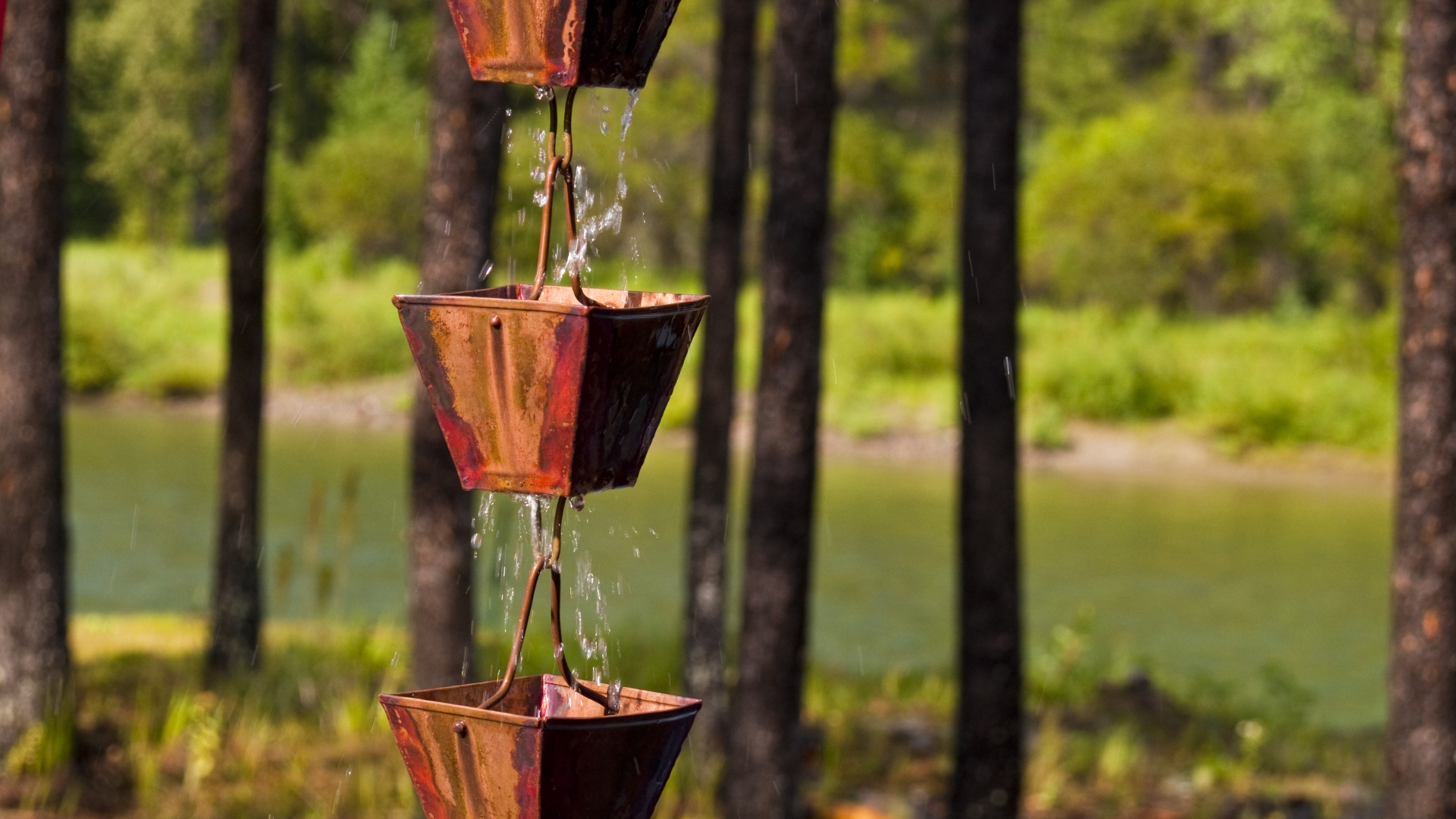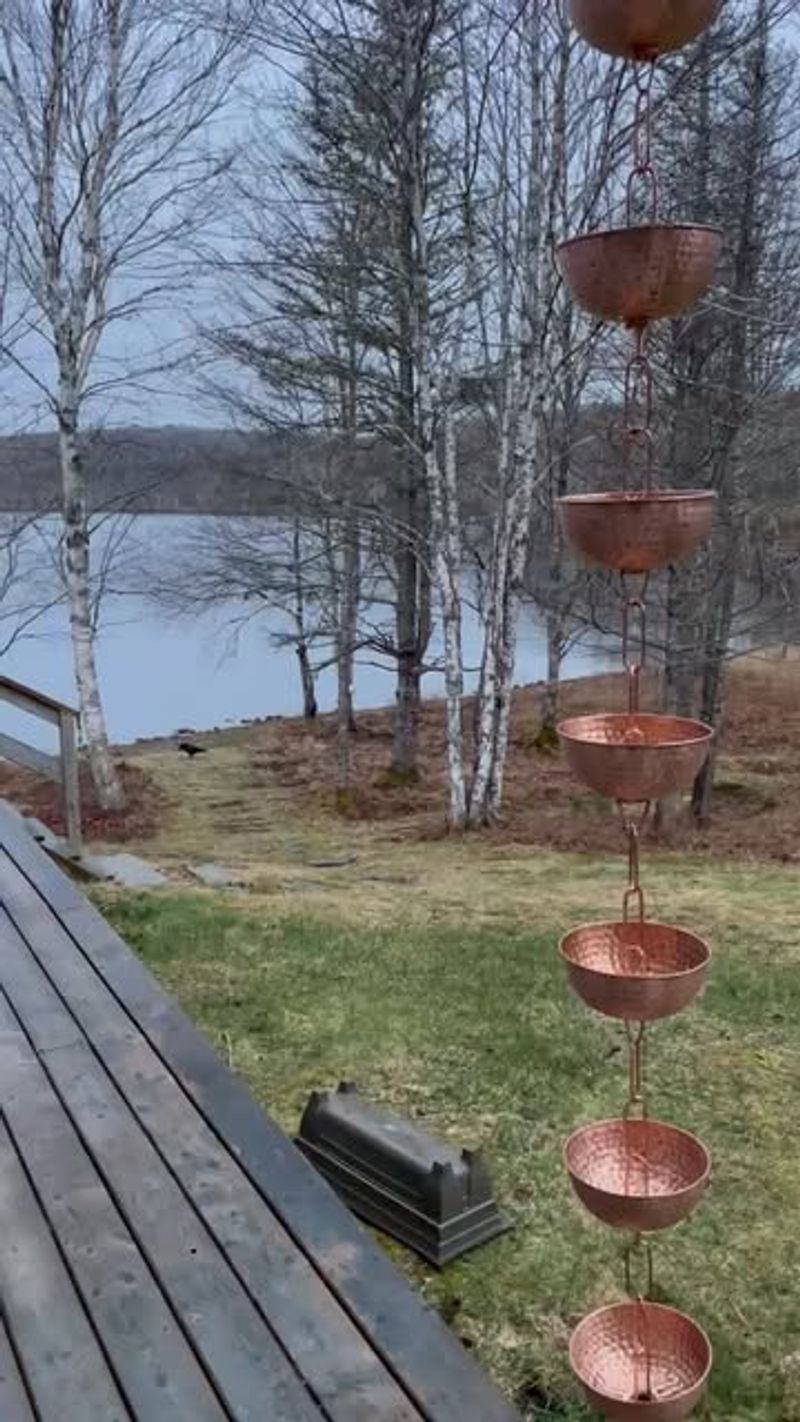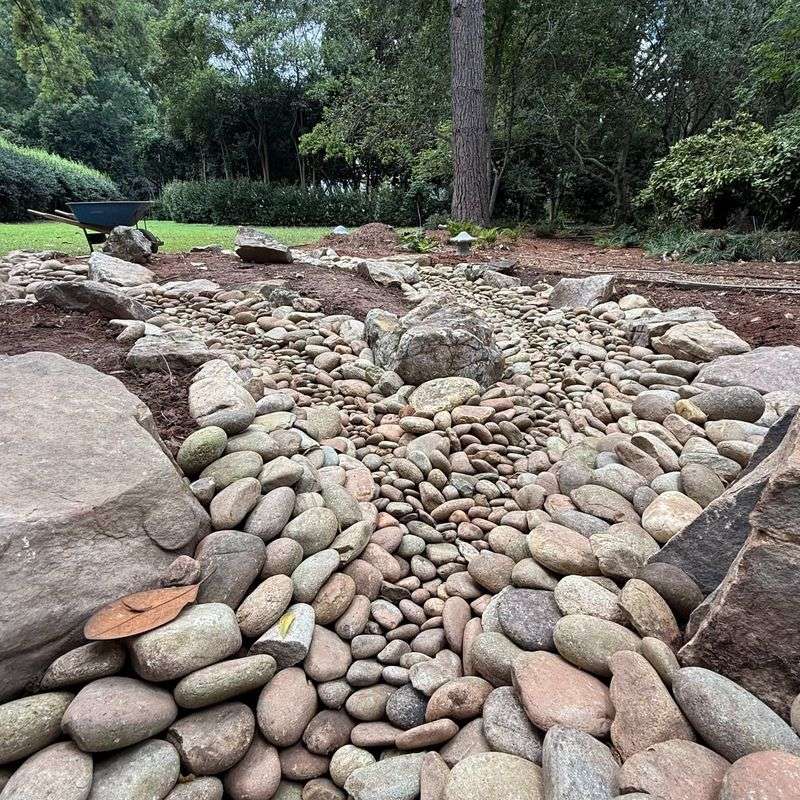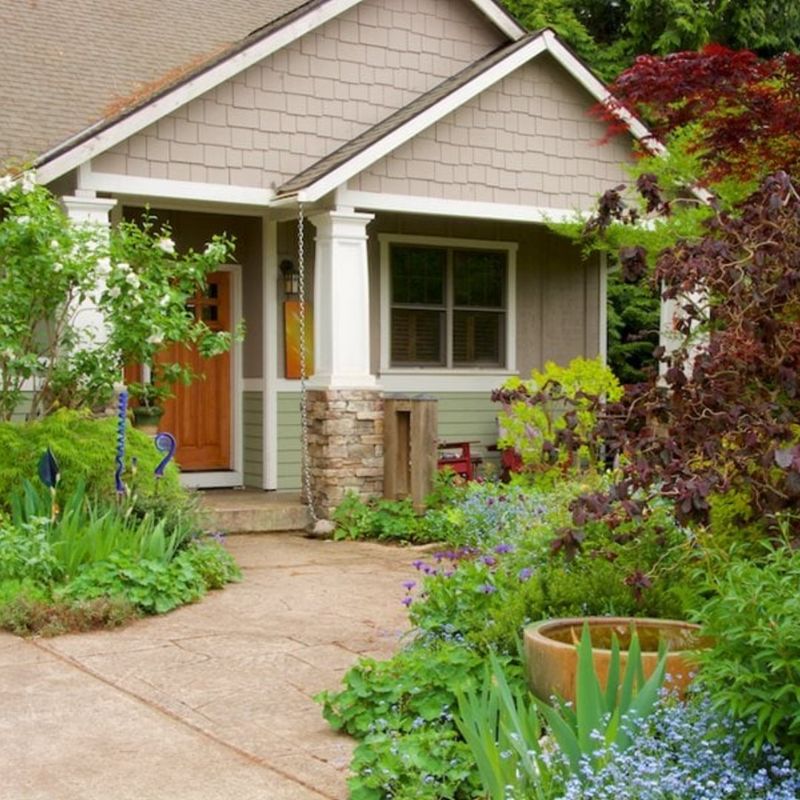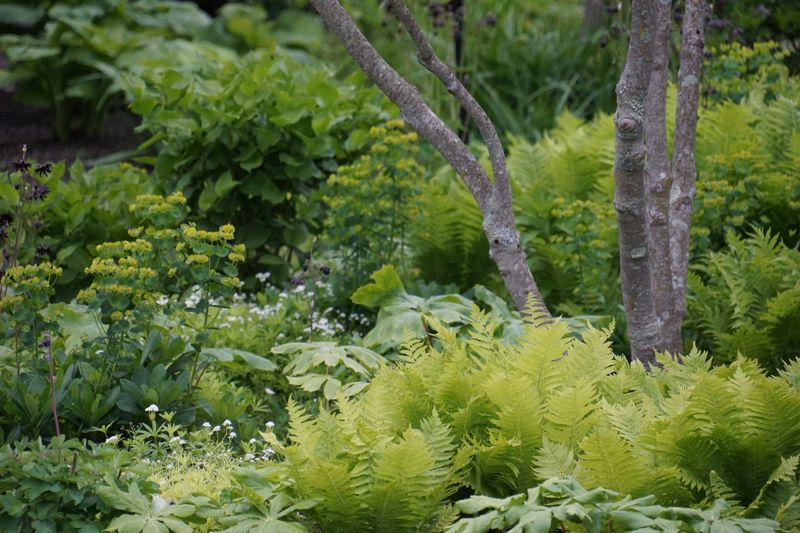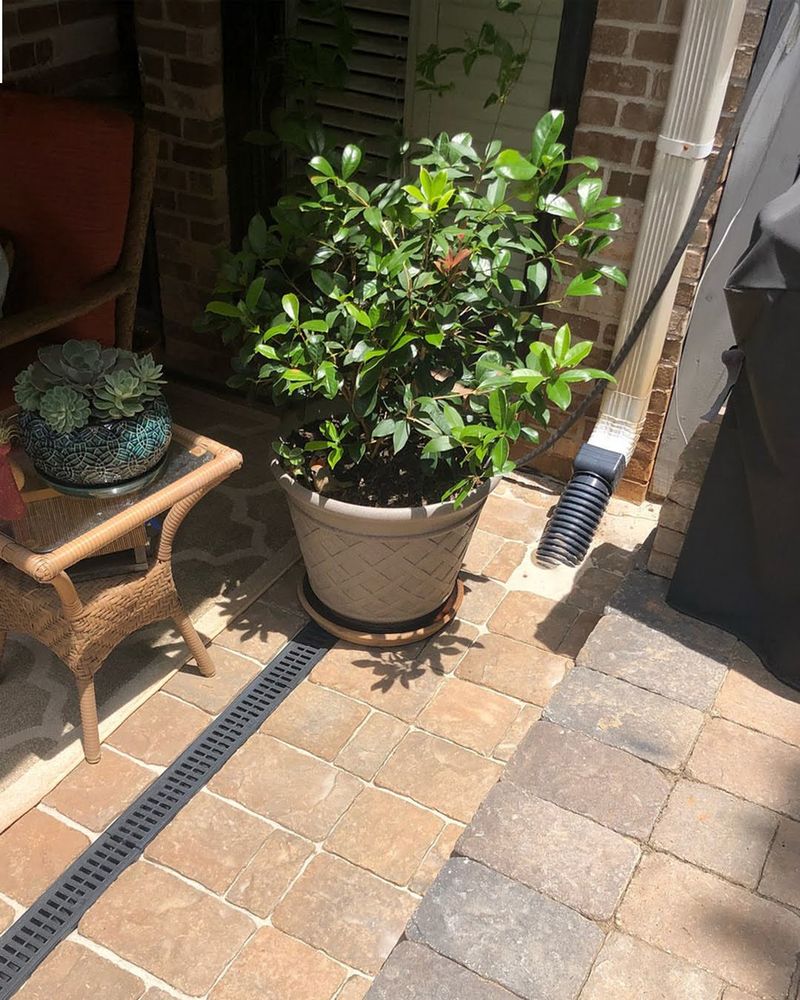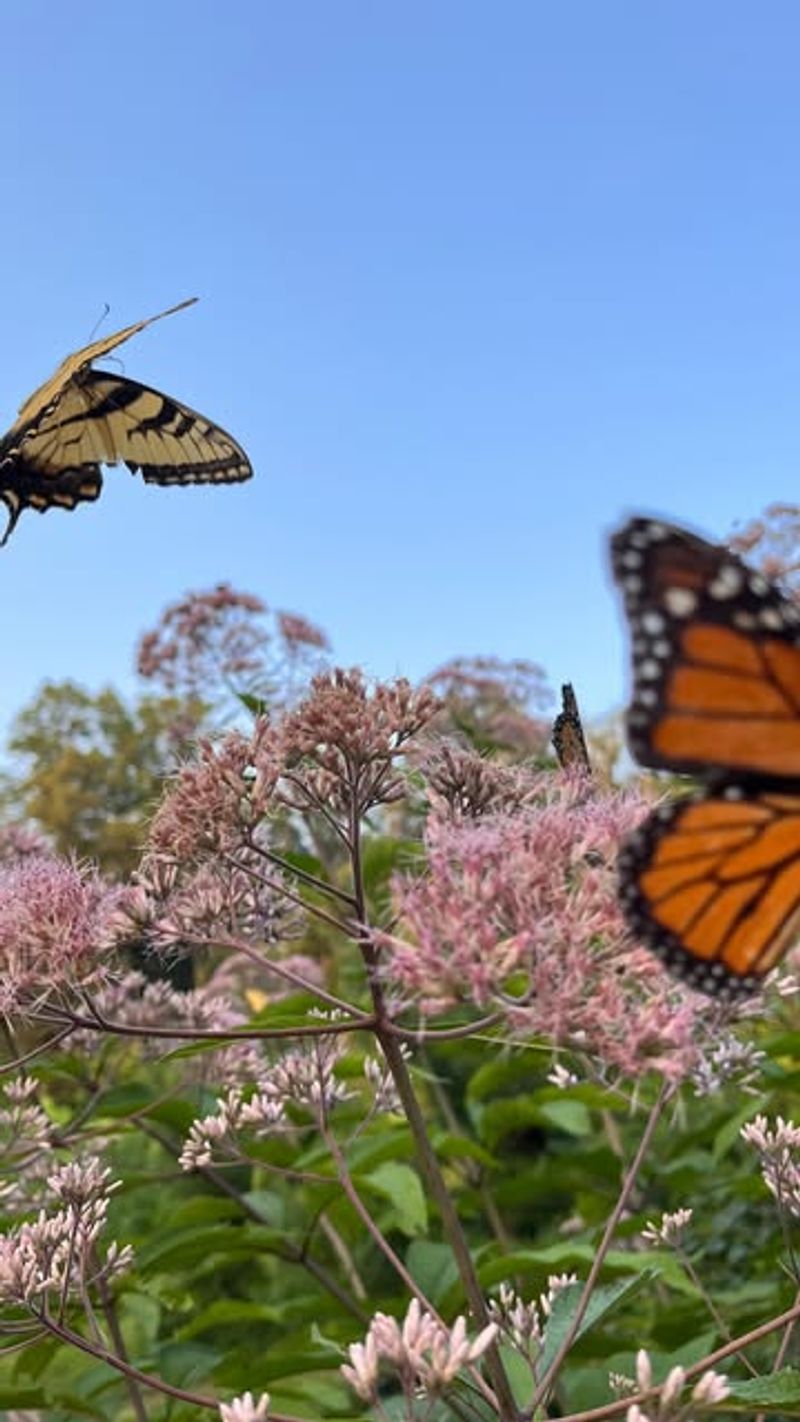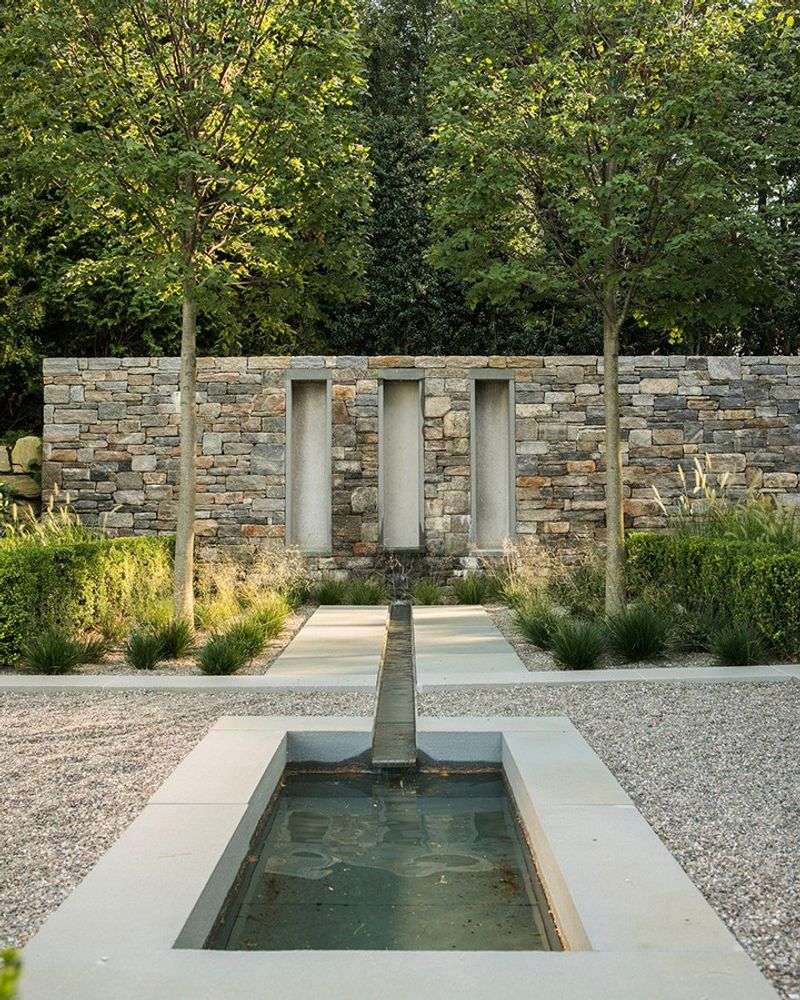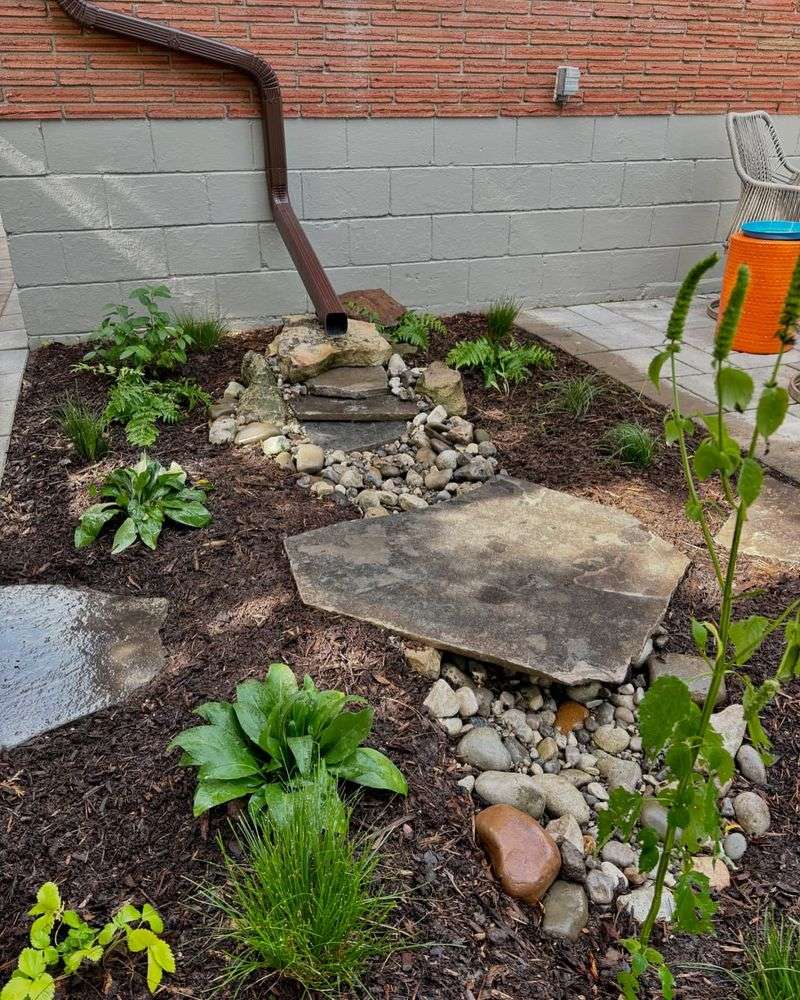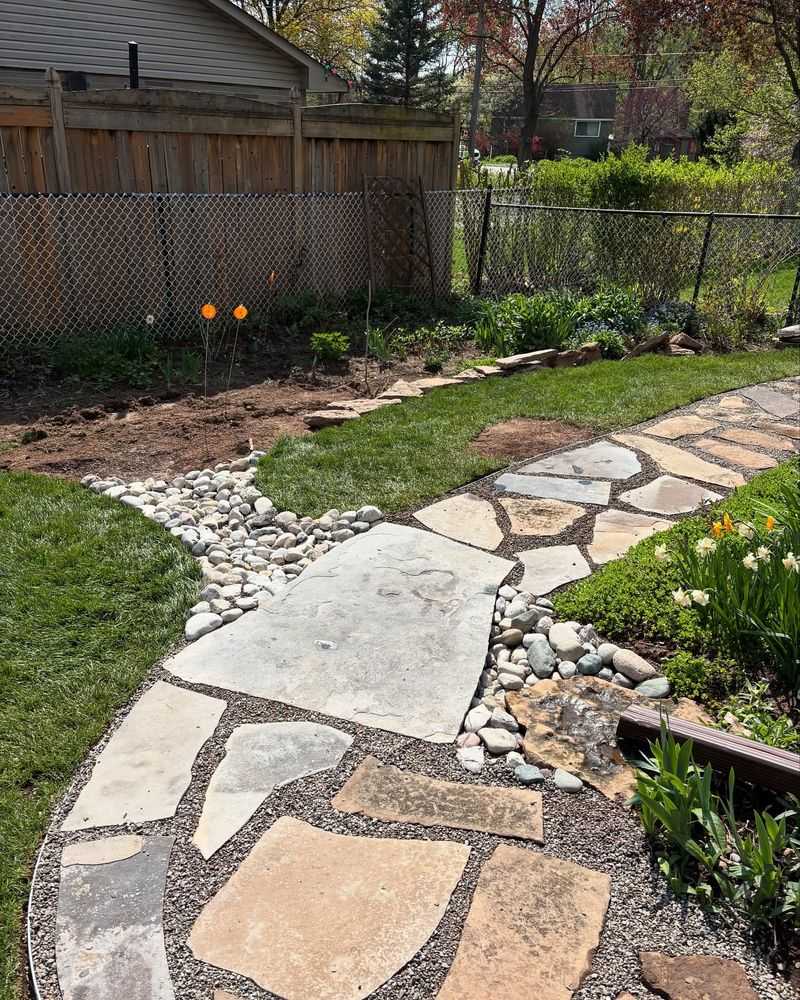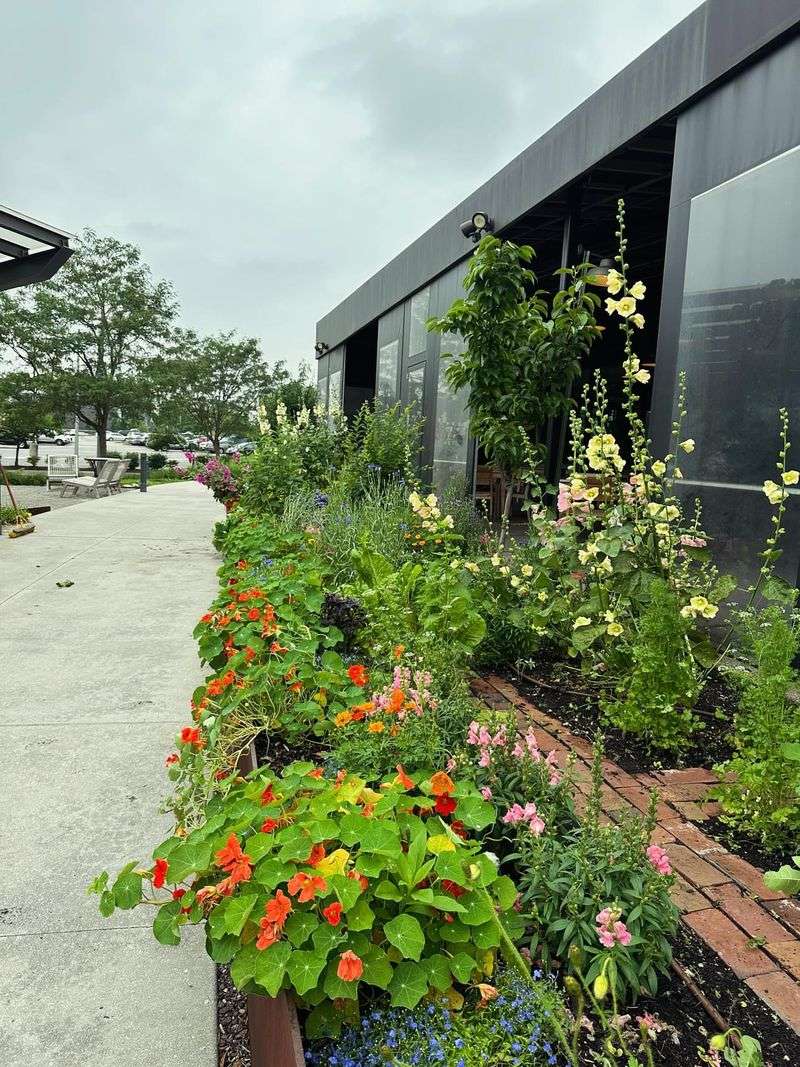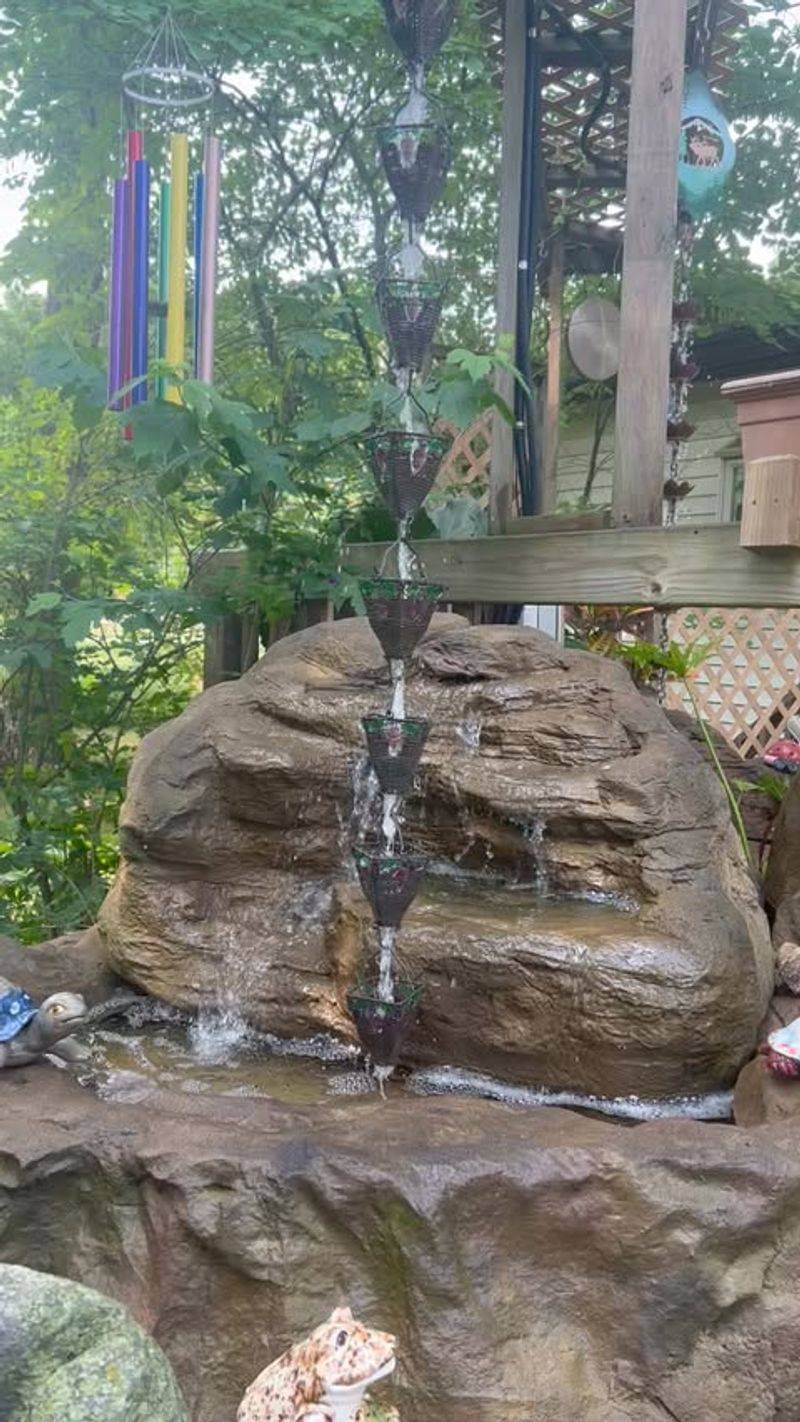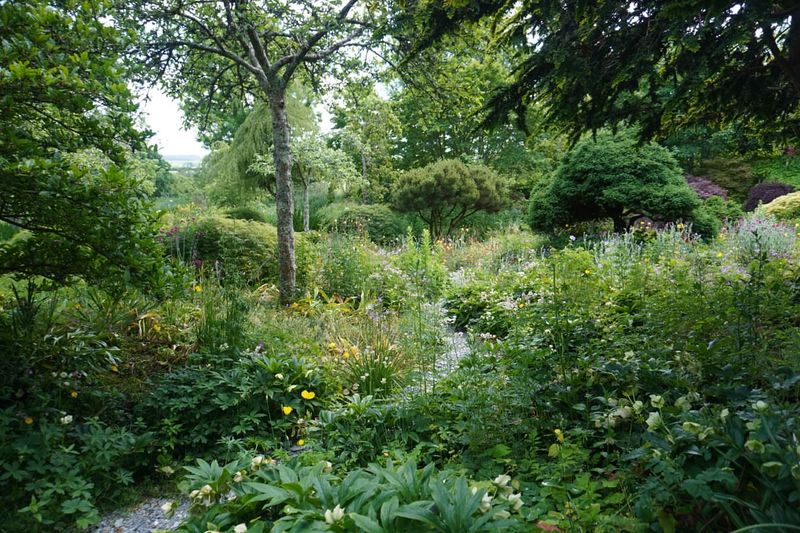Storms in Columbus often bring heavy rain, making smart rain garden designs important. Choosing native plants like blue flag iris and swamp milkweed suits wet conditions well.
Positioning your garden where water naturally collects helps manage runoff. This approach directs water to soak into the soil instead of pooling.
With the right setup, your yard can handle seasonal storms more naturally.
1. Bowl-Shaped Basin
Creating a gentle depression in your yard works wonders during Ohio’s unpredictable downpours. The natural bowl shape collects water that would otherwise rush toward storm drains.
Columbus homeowners find this design particularly effective because it’s simple to implement and maintain. Just dig down about 4-6 inches and use the soil to create a raised edge.
2. Tiered Cascade System
Water naturally flows downhill, so why not use that to your advantage? Multiple small basins connected by rocky channels guide water through your garden in stages.
Many Columbus residents with sloped yards have discovered this approach prevents erosion while creating visual interest. The tiered design slows water’s journey, allowing more absorption time.
3. Dry Creek Bed
Imagine a winding stream of smooth river rocks that springs to life only during rainstorms. Between storms, it’s a gorgeous landscape feature that adds character to any Columbus yard.
The secret lies in digging a shallow trench and lining it with landscape fabric before adding various sized stones. Ohio gardeners often incorporate drought-tolerant native plants along the edges.
4. Native Prairie Style
Tap into Ohio’s natural heritage with tall grasses and wildflowers that once covered the Midwest. Their extensive root systems can absorb incredible amounts of rainwater during Columbus’s heaviest storms.
Species like purple coneflower, switchgrass, and black-eyed Susans thrive in this climate while providing crucial habitat for local pollinators. The low-maintenance design only needs cutting back once yearly.
5. Woodland Edge Design
Mimic the natural transition zone between forest and clearing with this layered approach. Taller shrubs at the back create a backdrop for mid-height perennials and ground covers.
Columbus gardeners love how this design handles the region’s flash storms while providing year-round interest. Ohio natives like dogwood shrubs, woodland phlox, and ferns thrive in these partially shaded conditions.
6. Urban Courtyard Solution
Limited space doesn’t mean limited options! Compact rain gardens work beautifully in small Columbus patios and courtyards where every inch counts.
Urban Ohio homeowners can direct downspouts into stylish containers filled with water-loving plants. The trick is using deep planters with drainage layers of gravel beneath soil to maximize water storage capacity.
7. Butterfly Magnet Garden
Combine stormwater management with habitat creation by focusing on plants that attract butterflies. Milkweed, joe-pye weed, and asters thrive in rain garden conditions while supporting Ohio’s native pollinators.
Columbus gardeners report seeing monarchs, swallowtails, and skippers visiting these gardens throughout summer. The key is providing both nectar sources for adults and host plants where caterpillars can feed.
8. Formal Geometric Basin
Who says rain gardens can’t be sophisticated? Clean lines and symmetrical patterns create an elegant solution for traditional Columbus homes where natural styles might feel out of place.
Ohio gardeners with formal landscapes appreciate how this structured approach manages stormwater while maintaining design coherence. Using decorative stone edging and neatly trimmed plants keeps everything looking intentional rather than wild.
9. Bioswale Corridor
For properties with significant runoff, a bioswale creates a living channel that moves water while filtering pollutants. These shallow, vegetated ditches work brilliantly along Columbus driveways and property boundaries.
Ohio landscapers typically grade these gently to slow water flow without causing pooling. Native sedges, rushes, and iris thrive in these conditions while their roots help break down contaminants from roadways.
10. Four-Season Interest Design
Combat the gray Ohio winters by selecting plants that provide visual appeal year-round. Red twig dogwoods offer striking branches when snow falls, while ornamental grasses provide winter texture.
Columbus gardeners can incorporate early spring bloomers like Virginia bluebells alongside summer coneflowers and fall asters. Strategic placement of evergreen sedges ensures the rain garden never looks completely dormant, even in January.
11. Permeable Pathway Integration
Combine function and circulation by incorporating stepping stones or gravel pathways through your rain garden. During dry periods, these provide access; during storms, they allow water infiltration.
Columbus homeowners appreciate how this design turns a utilitarian feature into an inviting garden journey. Ohio-friendly path materials include local flagstone set in gravel or specially designed permeable pavers that handle freeze-thaw cycles.
12. Edible Rain Garden
Surprisingly, many food plants thrive in the occasionally wet conditions of a rain garden. Blueberries, cranberries, and certain herbs like mint adapt well to Ohio’s fluctuating moisture levels.
Columbus gardeners can position these moisture-loving edibles in the rain garden’s middle zones where soil becomes periodically saturated. Just remember to place plants that prefer drier conditions along the upper edges of your garden basin.
13. Artistic Basin With Sculpture
Elevate your rain garden beyond mere utility by incorporating water-friendly art elements. Sculptural pieces that interact with flowing water create delightful focal points during Columbus downpours.
Ohio artists have created specialized rain chains, metal wildlife sculptures, and stone arrangements specifically for these gardens. Position these artistic elements where they’ll catch water from downspouts or channel it through the garden.
14. Shade-Tolerant Woodland Basin
Many Columbus properties have mature trees that create challenging shade conditions. Fortunately, numerous native woodland plants evolved specifically for these situations while handling periodic flooding.
Ohio gardeners can transform these tricky spots using ferns, wild ginger, and woodland sedges that thrive in dappled light. The shade actually helps reduce evaporation, making these gardens particularly effective at retaining stormwater.

